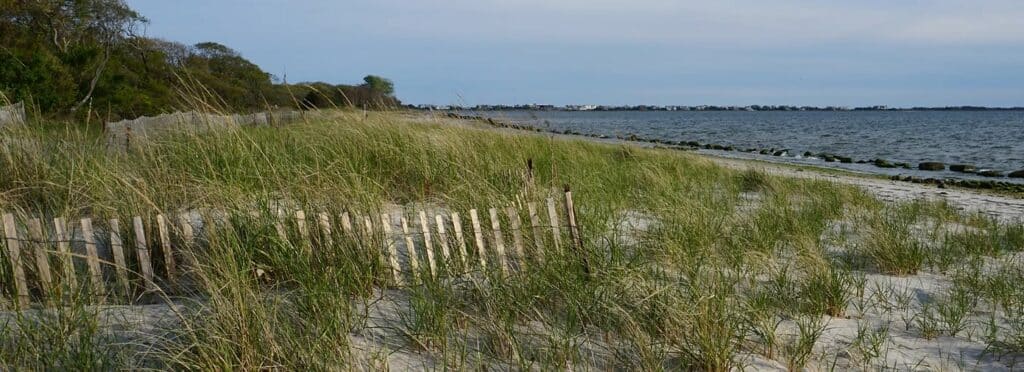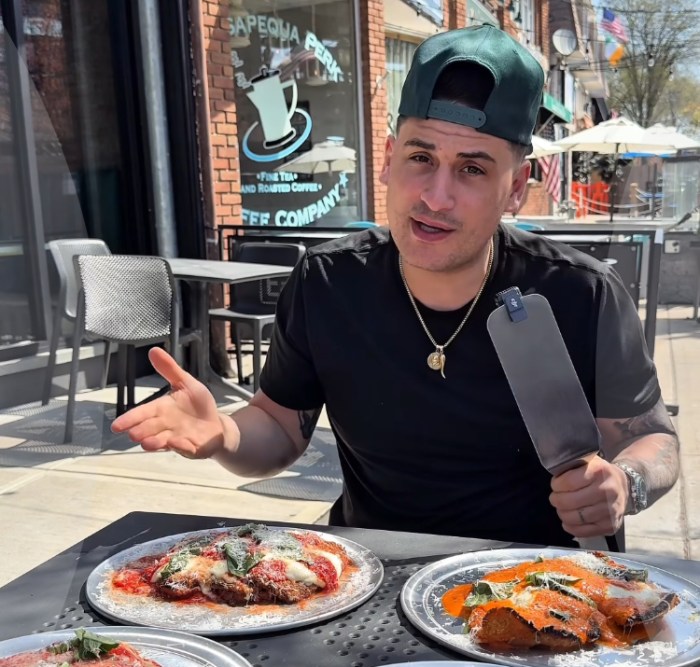Our last installment left off in the island’s East End, where European colonists who grew hemp for sails and rigging left their mark behind with the name ‘Hamptons.’
For this installment, we return to Eastern Long Island and Southampton, where members of the Shinnecock Nation will soon open the first medical- and adult-use dispensary in New York State, Little Beach Harvest, on Shinnecock tribal land (where, incidentally, the tribe also previously spent years working to develop a casino, only to have other parties swoop into the region recently to steal their playbook, says Patch).
In late January, Little Beach Harvest Managing Director Chenae Bullock spoke to Anton Media Group about her background in cannabis, how construction is going, the history and modernity of jurisdictional law, and what she’d like to see in this industry going forward. Ms. Bullock’s comments have been lightly edited for length and clarity.
Background and work in cannabis
“In this American life, unfortunately, it’s not big to teach kids at a young age about cannabis being a medicinal plant. So it was when I was in college that I started learning about the hardships that people are going through, and have been going through. In high school, you’re taught that it’s bad, that people smoke it, things like that. In college I started studying it a lot more, including the background and history of it in this country, really around the ‘War on Drugs.’ That sparked my interest to advocate for it.”

“As far as involvement [in cannabis] and stepping into the role I’m in now, that began at the end of 2019, when my tribe had an opportunity for a tribal citizen to become the new managing director for our tribe startup cannabis business, Little Beach Harvest.”
“A large part of my role right now is overseeing the construction side of the business, and everybody is getting ready to see that beautiful rendering come to life. So it’s a really exciting time.”
“On the operations side, we are getting ready to do more of the educational, career-oriented work; we had a mock job fair for tribal members, and we’ve been doing a lot of training and education over the winter. Our tribe has passed the adult-use program for our tribe, so applications for tribal members, as well as Little Beach Harvest, for adult-use licenses have been issued.”
In local history, jurisdiction is king
“When we think about tribes on Long Island, and governance, it’s all about jurisdiction, throughout history.”
“The United Colonies of New England included Massachusetts, Connecticut, New Haven, and Plymouth colonies, established in 1643. Establishing colonial presence on Long Island with governance, under a governor, didn’t really happen until around 1664.”
“When all of the indigenous massacres happened [in the 1600s], the governance structure was different on Long Island on the colonial side because there wasn’t a colony. There was settlements of homes, and they still adhered to the king of England at the time. A gentleman named James Farrett, the Earl of Sterling, was the one who was selling off parts of the land. There were indians who made agreements with those who established those settlements, but they didn’t govern what the natives did on their land.”
“For example, Canarsie is the tribe that is located in and around Brooklyn, the Rockaways. The Canarsie is essentially the tribe that historically was forced, and I will say forced, to sell their land for 24 strands of wampum beads; that’s the story people hear. Once they made that transaction, that land was no longer in the jurisdiction of the Canarsie.”
“If they were living on that land, and were growing [hemp], they were forced to do so under the jurisdiction of the [new] establishment in governance over that land.”
“Shinnecock has never been removed from our land, and we’ve never sold our land, therefore we can do what we need to under the jurisdiction of the Shinnecock Nation.”

“So, fast forward to 2023: the Shinnecock [Nation] does not need to be governed by the state to what we can and cannot do on our land, because those same jurisdiction aspects are still in place. New York State was not in place at that time, the United States was not in place at that time, and there wasn’t a governor in place until 1664. It wasn’t until those land parcels started being sold off, or stolen, that you could then enforce laws on a people that are living on the land of whatever colony or establishment.”
“We don’t have a lot of public lands in this region, and having these historical conversations can help us shape policies today. When you look at any kind of case studies, they comb back to old laws, using language from old cases and individual cases, whether they were tribal people or not.”
Restoring culture and prosperity in the East End
“What I would like to see is inclusion.”
“You have two or three jurisdictions: the State of New York, the Shinnecock Nation, and the Unkechaug, or Poospatuck, if you will, which is a state tribe, not a federal tribe, who has also historically never left their land. Then you have the Montauk community, who were essentially burned out of their land. They literally had their houses burned down to the last person, almost, and were physically burned off of their land.”
“With that being said, here you have a tribe that is working with all types of diverse people in the industry: women-owned businesses, MSOs, minority-owned businesses, at every angle, from the environmental side to the construction side. I would like to see the local area support that and advocate for the challenges that are happening, because it provides jobs.”
“I don’t want to see interruptions in our businesses. Let’s say we wanted to wholesale from farmers in Long Island. New York State still has to agree to that because those farmers have a license, and it’s risky for them to do business in a separate jurisdiction.”
“This kind of business shouldn’t be interfered with, because it’s a win for Long Island, a win for the state, and a win for the Tribe.”
“I’d like to see that type of inclusion, not only just for farmers but for brands and other operators throughout the state who have already been supporting what we’ve got going on.”
Representation and regeneration
“I’d also like to see more inclusion of Native people in ‘social equity groups.’ When I show up in the room, I’m the only Native in the room. So I’d like to see those different associations and boards diversify by including someone from the local community where they are.”
“We see this in the arts, and in environmental spaces, but we never see it in commercial spaces.”
“Shinnecock has one of the well-known climate adaptation plans, and we are looked at as thought leaders when it comes to the environment. Whenever a whale washes up anywhere on Long Island or near New York City, Shinnecock is called immediately, because we have historical rights and access to whales based on a 1640 agreement with John Cooper (yes, as in Cooper Beach, the beach our kelp farmers don’t currently have access to).”
“The marine biologists, the art spaces, they all work with us, but we’re not in the business and economic conversations, the chambers of commerce, the economic advisory boards. We’re not. And that’s what continues the wealth gap.”
“We will be opening our doors in the next few months and welcoming people to come and build a relationship with the Nation. Come and learn about what we’ve got going on, but also invest in a Native community, and help bridge the wealth gap but also sustain this planet.”
“You’re not paying the same tax that you’re paying in New York State jurisdiction; in our jurisdiction, you’re paying a four percent community fee, which goes straight back to the Shinnecock community. That way we can pave our roads, add streetlights, and help families fix up their homes because they can’t get mortgages. When customers come in and purchase, that four percent makes a big difference.”

































